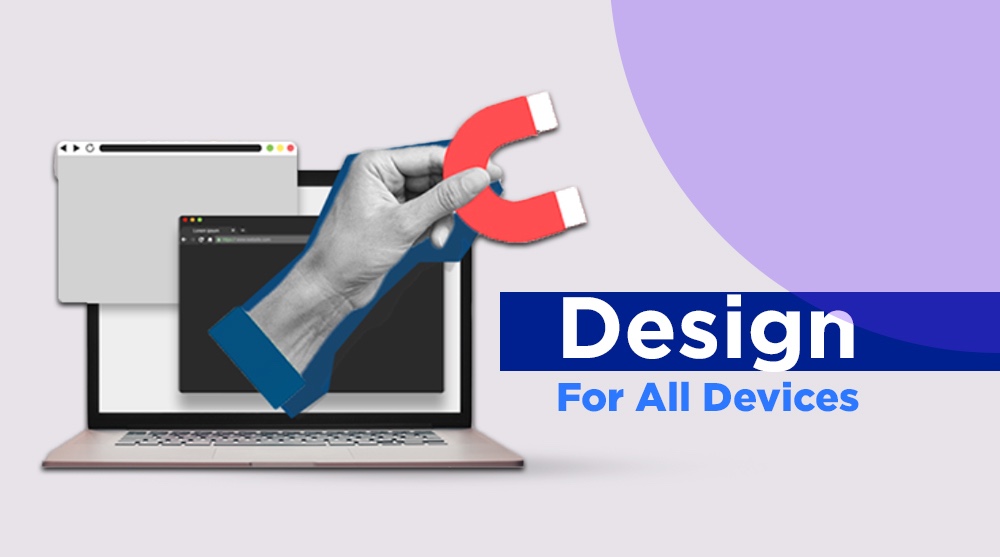7 Key Benefits of Responsive Web Design You Can’t Ignore
In the current digital environment the need for a strong web presence has become more essential than ever. As the use of mobile devices continues to grow, businesses must warrant that their websites are functional and accessible across all devices. This is the point where the responsive design of websites comes into play. In the process of automatically adapting to different dimensions of screens, responsive design provides the perfect user experience regardless of how your audience visits your site. No matter if they’re with tablets, smartphones or computer your site will appear polished and run effortlessly. In this article, we’ll look at seven benefits of responsive design for your website that you can’t afford to ignore.
What is Responsive Web Design?
Before we can get into the benefits, it’s important to comprehend the concept behind responsive design is. Responsive Web Design (RWD) is a web development technique that allows for dynamic changes to the look and feel of a site, based on the size of the screen and the orientation of the device utilized. A responsive website makes use of layouts, grids and images that adapt to the user’s surroundings. Instead of creating numerous versions of a website for different devices, a responsive design makes sure that one site functions seamlessly across all devices.
Enhanced User Experience
One of the primary advantages of responsive layout is the fact that it significantly improves the user experience. A website that is simple to use, visually attractive, and speedy to load will create a lasting impression for users. On the other hand, sites that aren’t able to adapt to different devices typically cause frustrated users who will go elsewhere and never return.
With responsive design, your website adapts easily to various sizes of screens, making sure that images, text, along with navigation menus accessible to users. This seamless experience can lead to greater engagement, a longer time spent on your site and, in the end higher conversions.
Increased Mobile Traffic
With more than 50percent of all global web traffic being generated by phones, designing a site that is compatible with tablets and smartphones is no longer a luxury, but a necessity. If your website isn’t mobile-friendly it’s likely to lose the majority of visitors. Responsive web design helps with this issue by making sure that your website offers an enjoyable experience for users on mobile devices.
Google has also put an enormous importance on mobile-first indexing which means Google mostly utilizes the mobile version of a website for ranking and indexing. Thus, a responsive designs will not only draw more people to your site but additionally increase the ranking of your site in search results.
SEO Benefits
One of the less-known, yet powerful advantages of responsive website design is the positive impact it has on SEO. Search engines, especially Google are drawn to websites that provide an excellent customer experience for all types of devices. Since Google has introduced mobile-first indexing, responsive design will benefit your website to meet the new ranking criteria.
In addition responsive web design can eliminate the requirement to create an more mobile version of your website and allows you to have only one URL and a single collection of material. This allows you to consolidate the SEO efforts into one website, increasing your visibility on search engines, and avoiding issues such as duplicate material.
Easier Maintenance
The management of a desktop website as well as a mobile-specific site can be a long and costly task. The process of keeping the track of content as well as updates, SEO strategies and performance across two platforms can require significant resources. Reactive web design makes this easier by providing a single solution.
If you decide to go with responsive sites it is only necessary to keep only one version of your site. Any changes in terms of design, material, or backend changes, are immediately reflected on all mobile devices. This method of streamlined implementation saves time, minimizes the risk of inconsistencies and ensures that your website remains current and safe.
Faster Page Loading Times
Speed of loading on a page is a crucial aspect of the user experience as well as SEO. Research shows that people tend to leave websites if they take longer than three minutes to load especially when using mobile devices. A responsive design for websites incorporates techniques such as optimized images and effective CSS to benefit boost the speed of loading pages.
When your website loads fast throughout all mobile devices users tend to be more likely abandon your site as well as search engines will reward you with higher ranking. Shortly, responsive web design provides a smooth and quick experience, regardless of where your customers come from.
Higher Conversion Rates
The main goal of any site is to turn visitors to customers. When it comes to making a purchase or signing up to receive a newsletter, or using a contact request, the conversion rate usually vary based upon how easy for users to navigate the site is. If users are forced to squeeze, zoom and struggle to navigate your website in order to navigate, they’re much less likely to make a conversion.
The responsive design of your website makes the website user-friendly and simple to use to warrant that your visitors navigate easily regardless of the device they are using. Through removing obstacles and enhancing accessibility, responsive design can increase conversion rates, resulting in more leads or sales.
Future-Proofing Your Website
As new devices with various screen sizes are introduced to into the marketplace, your site must be able to adjust to. One of the many long-term advantages of a responsive web layout can be that it ensures the future of your website. Instead of building a new website every when a new kind of device is released the responsive design can automatically adjust to any size screen and warrant that your site is functional and appealing to the eye.
This flexibility means that you don’t need to devote more time and effort developing the latest versions of your website or continuously reworking it to stay up-to-date with the latest technology. Responsive Web Design is designed to deal with whatever future developments in web browsing holds.
Conclusion
Responsive websites offer numerous advantages that should not be overlooked. From improved user experience to enhanced SEO and quicker loading times, choosing the responsive design method is an investment that will benefit any company. With mobile usage continuing to grow, and search engines are focusing on mobile-friendly websites that are responsive, having a mobile-friendly website is no longer an option, it’s vital to maintain an edge over competitors. When you’re creating a new website or updating your existing site, using a responsive design can benefit keep you ahead of the curve in a world that is increasingly mobile-focused.
FAQs
What is responsive web design?
Responsive web design makes sure that the website is able to adapt to the size of the screen as well as the orientation and size of device used, giving users a great experience for all devices.
What can responsive web design do to boost SEO?
A responsive design can help boost SEO by providing users with a more pleasant experience, faster loading speeds and mobile-friendlyness, which are all important ranking factors for search engines.
What makes responsive design so important for mobile users?
With the majority of site traffic is coming from smartphones, responsive designs makes sure your website is accessible and accessible on smartphones as well as tablets, bringing in more users and reducing bounce rate.
What are the major advantages of responsive web design?
Benefits include a more enjoyable user experience, better SEO, speedier page loading, simpler maintenance, and more conversion rates.
How can responsive design affect the conversion rate?
Through providing seamless experiences across all devices The responsive design minimizes the friction of navigation which makes it easier customers to finish tasks such as signing up or purchasing which payoff in more conversion rates.
Can responsive web design be used to future-proof my site?
Yes responsive web design will warrant that your site’s functionality is maintained on new devices and sizes of screens, preventing your time from continually making changes or updating your website.
Suggested Inbound Links:
- “The Importance of Mobile-First Design in 2024”
- “How to Improve Your Website’s Conversion Rates”
Suggested Outbound Links:
- Google’s Mobile-First Indexing Guidelines
- Latest Trends in Responsive Design Techniques (W3C)




